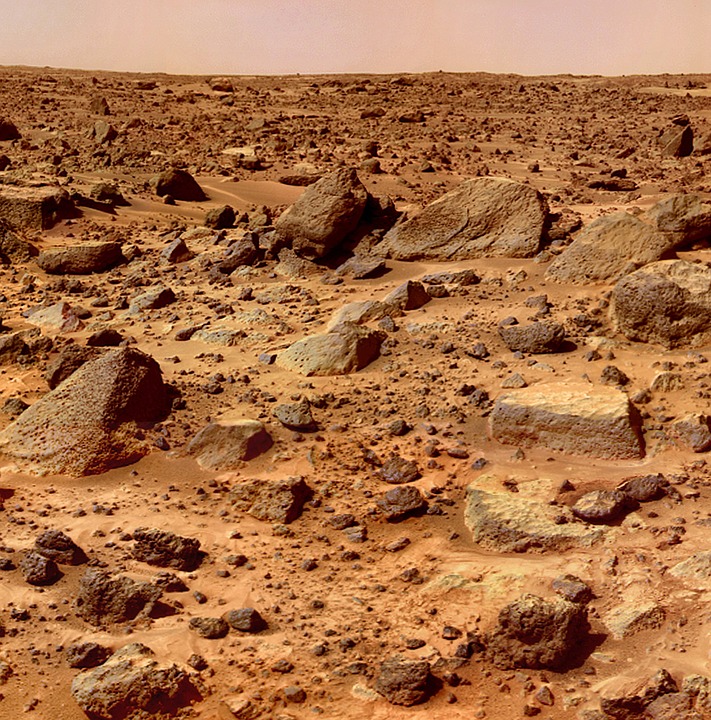NASA’s Perseverance Rover successfully launched into space today with the rover playing a big part in the preparation for future Mars missions. However, as the rover’s objective is to search the Red Planet for signs of life, one scientist has revealed the major roadblock that would keep scientists from determining whether or not there was once life on Mars.
Express reports Natural History Museum Planetary Scientist Professor Caroline Smith revealed to Times Radio that there is a challenge to overcome when the Perseverance touches down on Mars in 2021. Professor Smith explained that the only way to determine if there was once life on Mars is to bring Martian samples home, where the technology on Earth could be able to do the analysis.
“One of the issues that we have is we may well find some very interesting chemical and physical signatures within those rocks that could indicate that there was once life on Mars in the past where the crater is now. The problem is we will only be able to make that conclusive result to say that there was definitely evidence of life there with the right chemistry and the right textures when we bring those samples back to Earth,” explained Professor Smith.
Ms. Smith added that astronomers will have to make use of the instrumentation here on Earth to arrive to that conclusion. She noted that this is only the first step of a very ambitious but feasible Mars sample return campaign.
When asked what she expects to see among the samples, Professor Smith responded that she expects biological or biohazard tests would be done on the samples with various protocols in order to see if there is anything potentially harmful or toxic to Earth.
As to where the Perseverance Rover may be able to find these signs of life on Mars in its Mars mission, a study reveals that the best place to look is under the Red Planet’s dusty surface. According to NYU Abu Dhabi Center for Space Science astrophysicist Dimitra Atri, the subsurface is the best place for the rover to search for microorganisms.
This is because there are still traces of water under the surface and that it is protected from solar radiation as Mars has a barely-there atmosphere, making exposure to solar radiation lethal.



 Scientific misconduct is on the rise. But what exactly is it?
Scientific misconduct is on the rise. But what exactly is it?  Explosive CIA Whistleblower Claims Havana Syndrome Victims Face Cancer, Dementia, and Government Betrayal
Explosive CIA Whistleblower Claims Havana Syndrome Victims Face Cancer, Dementia, and Government Betrayal  Astronauts on NASA’s Artemis mission to the Moon will need better boots − here’s why
Astronauts on NASA’s Artemis mission to the Moon will need better boots − here’s why  Asteroid has a very small chance of hitting Earth in 2032, but a collision could devastate a city
Asteroid has a very small chance of hitting Earth in 2032, but a collision could devastate a city  A new study reveals the structure of violent winds 1,300 light years away
A new study reveals the structure of violent winds 1,300 light years away  Public Health Experts Warn of ‘Quad-Demic’ as Flu, COVID, RSV, and Norovirus Threaten Winter Surge
Public Health Experts Warn of ‘Quad-Demic’ as Flu, COVID, RSV, and Norovirus Threaten Winter Surge  FDA Approval of Opdivo Injection Sparks Hope for Cancer Patients with Revolutionary Treatment Update
FDA Approval of Opdivo Injection Sparks Hope for Cancer Patients with Revolutionary Treatment Update  From dead galaxies to mysterious red dots, here’s what the James Webb telescope has found in just 3 years
From dead galaxies to mysterious red dots, here’s what the James Webb telescope has found in just 3 years  Double Moonshot: Japan’s ispace and Firefly Launch Lunar Missions
Double Moonshot: Japan’s ispace and Firefly Launch Lunar Missions  Quantum technologies are changing our world – what does NZ need to be part of the next revolution?
Quantum technologies are changing our world – what does NZ need to be part of the next revolution?  What’s the shape of the universe? Mathematicians use topology to study the shape of the world and everything in it
What’s the shape of the universe? Mathematicians use topology to study the shape of the world and everything in it  Bill Gates’ Shocking New Malaria Solution Unveiled as Genetically Modified Mosquitoes Turn Into Flying Vaccinators
Bill Gates’ Shocking New Malaria Solution Unveiled as Genetically Modified Mosquitoes Turn Into Flying Vaccinators  Firefighting planes are dumping ocean water on the Los Angeles fires − why using saltwater is typically a last resort
Firefighting planes are dumping ocean water on the Los Angeles fires − why using saltwater is typically a last resort 































